With 13 endemics and a number of iconic tropical species, Seychelles has long been a popular destination for keen birders as well as holidaymakers.
The archipelago itself stretches across more than 1,000 km of the Indian Ocean, with the furthest outpost – the Aldabra Group of atolls – closer to Madagascar and mainland Africa than they are to Mahé, the largest island of the Seychelles and the jumping-off point for almost all its resorts.
The Outer Islands are seldom visited by birders. One such atoll – or rather, collection of atolls – is the Cosmoledo Group. Cosmoledo was inhabited as a fishing and turtling station until 1992 when it was abandoned, leaving behind the inevitable rats and cats. In recent years, successful efforts to remove the introduced fauna have returned these otherwise-unspoilt atolls to their natural state and the birdlife is thriving as a result. Until recently the only visitors here were the occasional cruise ship or group of researchers, but a new Blue Safari group eco-lodge has provided an opportunity to experience this pristine ecosystem. From Mahé it is the small matter of a two-leg, two-and-a-half-hour flight and a 90-minute boat journey to reach Cosmoledo. There's no land transport here or any real tracks to get around the island, which is just 3 km in length, adding to the feeling of being somewhere truly wild and remote.
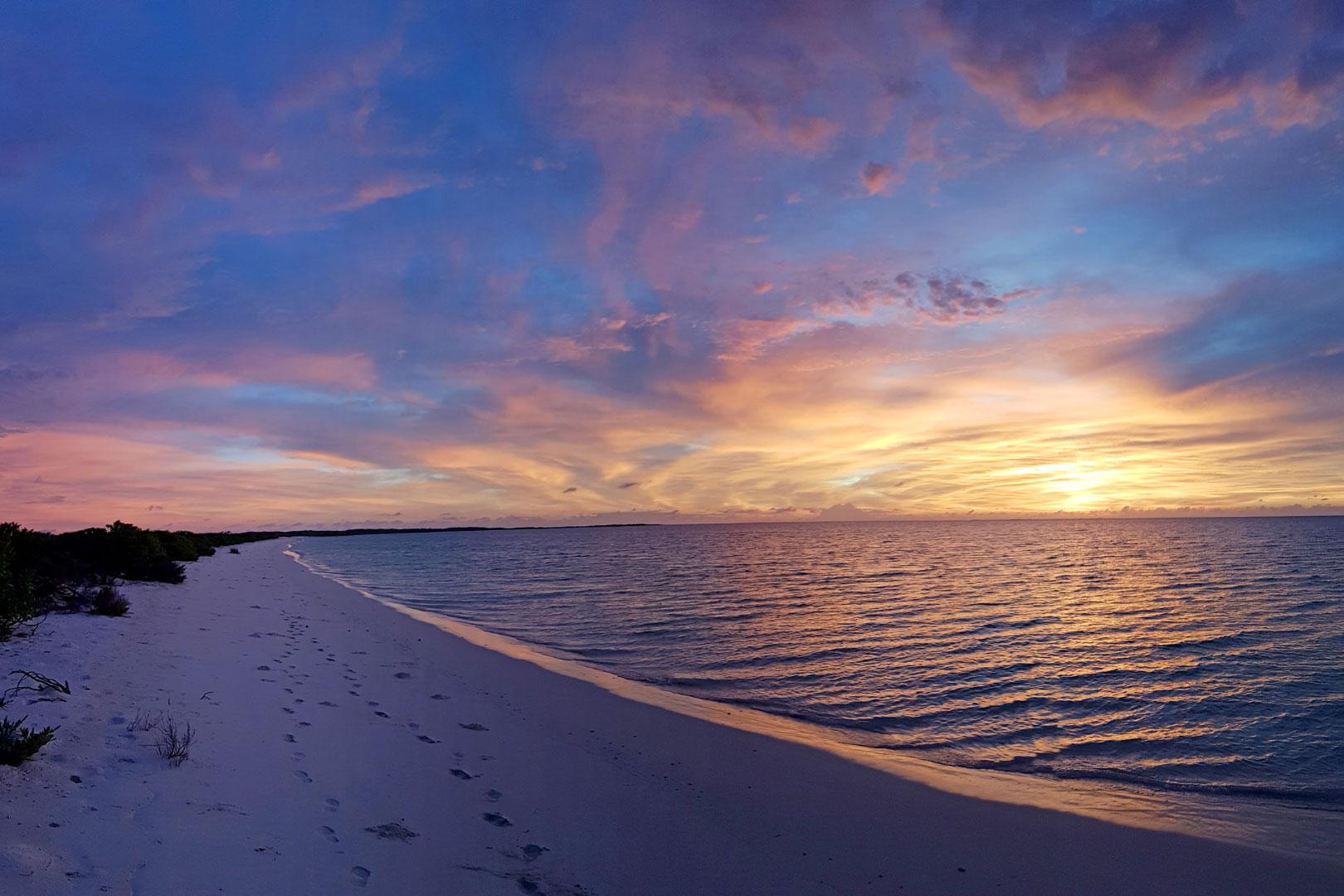
Cosmoledo is both remote and bustling with spectacular tropical wildlife. What's more, the light conditions "were like nothing I've seen before", according to Kit.
Cosmoledo is home to just a handful of landbirds; the most conspicuous of which are Madagascan Cisticola, Malagasy Turtle Dove and Souimanga Sunbird, the last of which is also found in Madagascar. The sunbirds on Cosmoledo Atoll and nearby Astove Island are quite distinct in appearance from those on mainland Madagascar, and are sometimes considered to be a separate species (Abbott's Sunbird). These species are remarkably numerous across the Cosmoledo Group, but it is unusual to encounter any other landbirds. A Broad-billed Roller I stumbled across one afternoon was a real surprise!
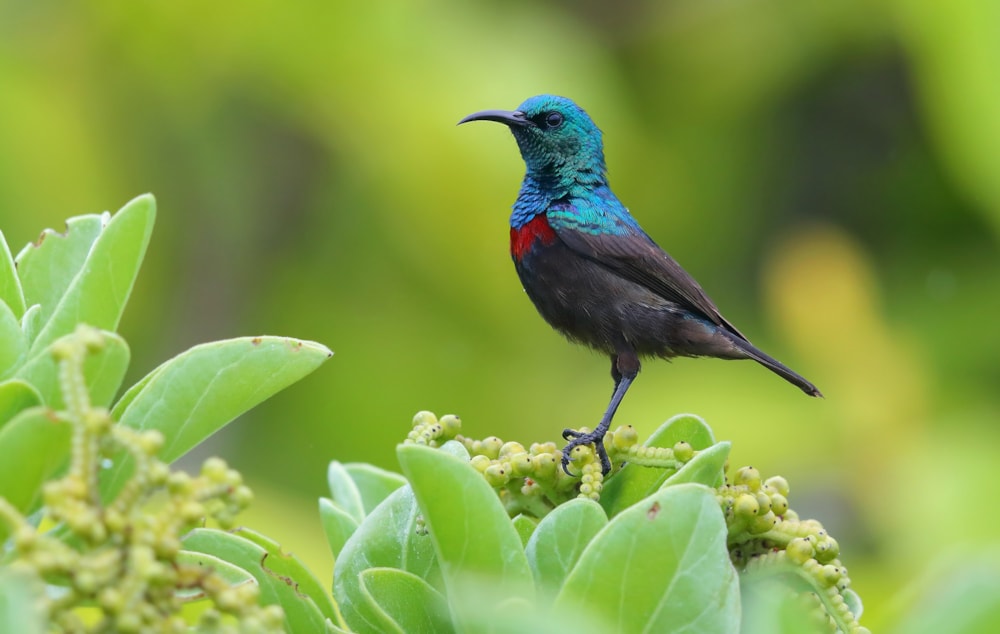
The local abbotti subspecies of Souimanga Sunbird is a good candidate for being elevated to full species status (Kit Day).
Seabirds are a different matter, with upwards of 1 million pairs of Sooty Terns carpeting the sparsely vegetated surface of Grand Île during the south-east monsoon season from May to September. On my visit in late November only a few Sooties were seen on the boat crossing, along with both Brown and Lesser Noddies and streams of boobies commuting between feeding areas and their breeding colonies on Cosmoledo. Red-footed is the most numerous, with an estimated 15,000 pairs favouring Île du Sud-Ouest.
There is accommodation here for a maximum of 16 guests in eight remarkably well-equipped and comfortable converted shipping containers, each placed a matter of metres from the beach on Grand Île. The bushes around the lodge buildings hold the ubiquitous Madagascar Cisticolas and Souimanga Sunbirds, with both species also paying regular visits to the interior of the large tent which serves as a reception, lounge and restaurant area, where superb meals are served. A few pairs of the iconic White Tern, referred to locally by the evocative name of Fairy Tern, could also be found canoodling just outside the rooms. This species was previously considered to be an annual visitor to Cosmoledo, but now appears to be breeding in small numbers.
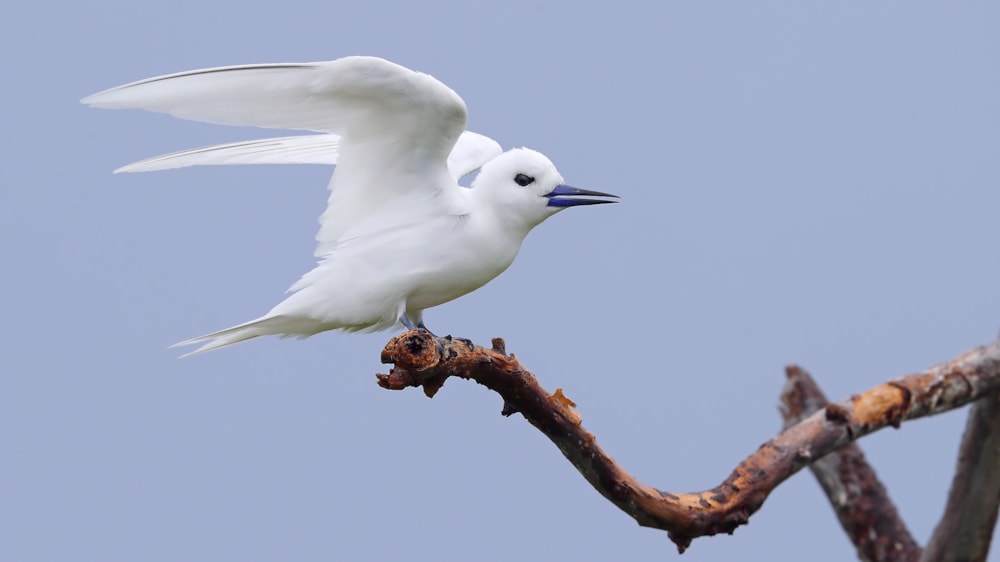
White Tern is one of tropics' truly iconic birds (Kit Day).
An exploration of the island revealed scattered colonies of handsome Masked Boobies, many with large chicks. The ominous shapes of Great Frigatebirds constantly swirl overhead, waiting for a booby to return from a feeding trip. Any such birds are immediately targeted by teams of frigatebirds, chasing them down, harrying and snapping at them until they're forced to cough up some fish in exchange for a bit of peace and quiet.
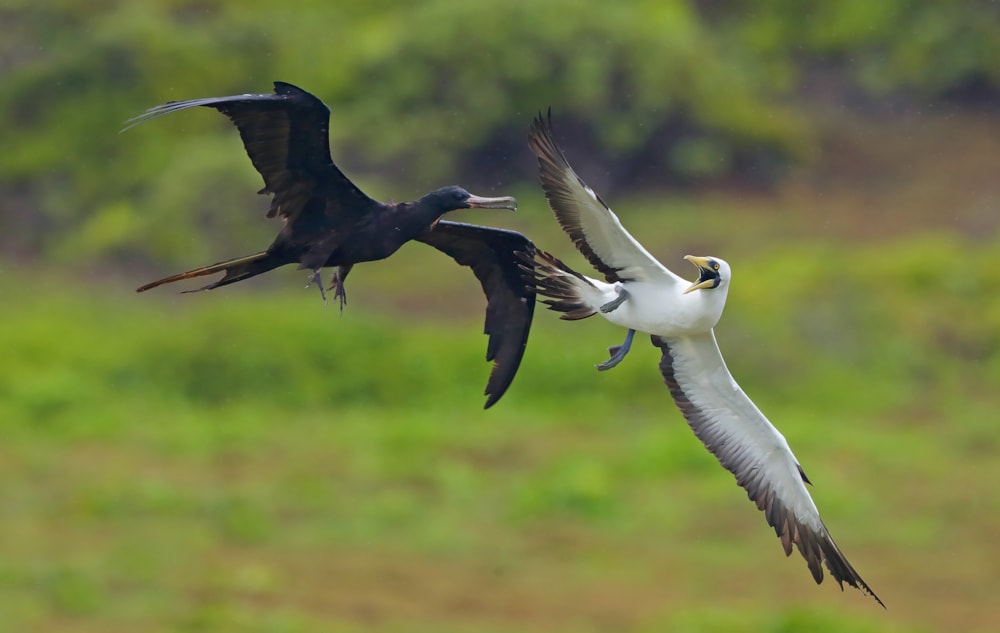
Masked Boobies were constantly given a hard time by the local Great Frigatebirds, creating an entertaining all-day spectacle (Kit Day).
Red-tailed Tropicbirds drifted past serenely, keeping well clear of the booby vs frigatebird melee. The majority of the local tropicbirds breed on Île du Sud-Ouest, but a squawk from beneath a bush on Grand Île alerted me to a bird on a nest there, too.
The beaches host numerous visiting waders and terns, the undisputed highlight of which is a large flock of the bizarre Crab-plover. I spent a whole evening secluded in the vegetation at the top of the beach as a group of roosting Crab-plovers was gradually brought closer by the rising tide, providing stunning views.
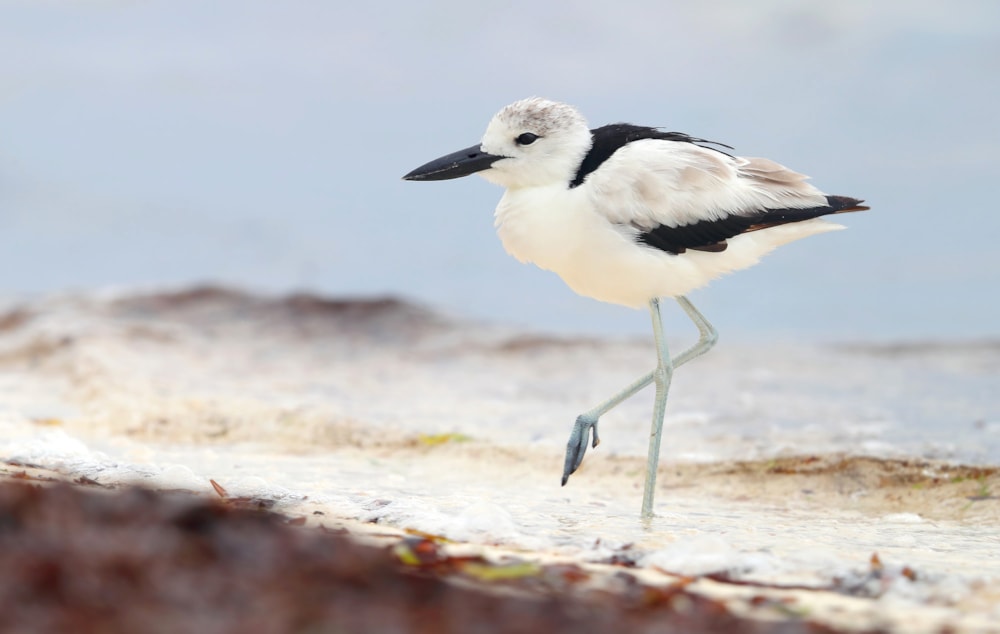
One of the highlights of the trip was the chance for excellent views of the outstanding Crab-plover (Kit Day).
The lodge is open to tourists from November to April to avoid disturbance to the nesting Sooty Terns; during the rest of the year accommodation is offered to the Islands Conservation Society (ICS) to monitor and carry out research on bird and marine life.
The partnership between Blue Safari, ICS and the Island Development Company (IDC) is strongly in evidence on the island of Alphonse, some 600 km to the north-east of Cosmoledo. This is the headquarters of Blue Safari operations, with accommodation for around 100 guests, but it's still perfectly possible to find a bird-filled patch of beach all to yourself on a stroll around the island's 6-km coastline. The IDC and ICS have resident staff on Alphonse to conduct research and conservation programmes, lead diving and snorkelling activities and guide nature walks. In the evenings there are frequent presentations about aspects of local wildlife and conservation work. These organisations and other partners have formed the Alphonse Foundation, working together to preserve the environment alongside ecotourism.
A lot of thought has gone into ensuring the impact on wildlife is minimised as far as possible, a good example being the use of turtle-friendly light bulbs around the cabins in conjunction with the intentional placement of thick vegetation to block out the light and avoid attracting young turtles away from the sea. Fishing is one of the most popular pursuits among guests to both Cosmoledo and Alphonse, but all fish that are caught are returned. An allotment on the island contributes fresh fruit and vegetables to the excellent meals served up to guests.
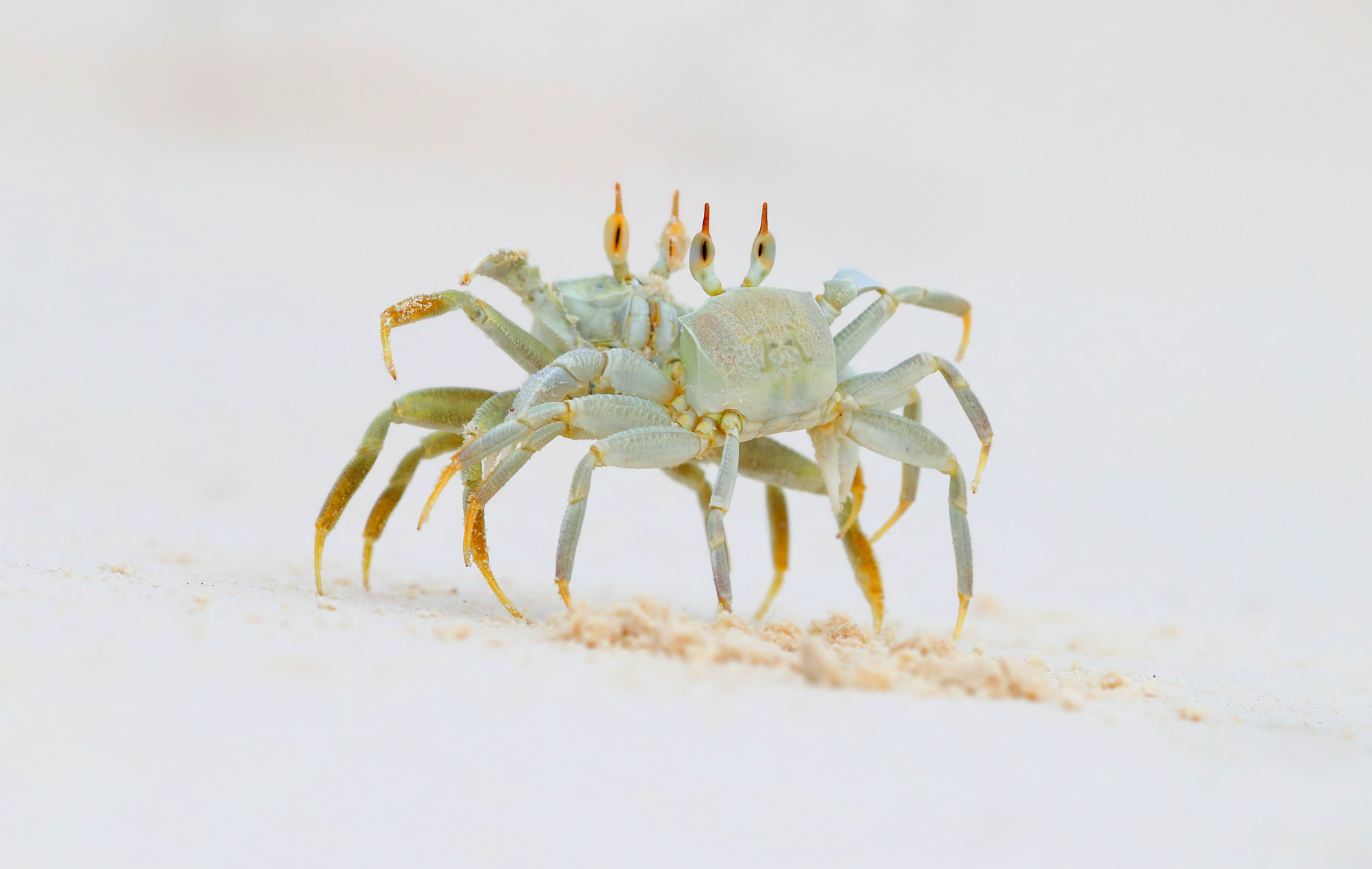
Where there are Crab-plovers, there are crabs ... the spectacular and photogenic Horned Ghost Crabs proved a constant source of amusement on the beaches of Cosmoledo (Kit Day).
The Alphonse group includes the nearby islands of Bijoutier and St François. The latter is the destination for frequent excursions from Alphonse and hosts breeding Black-naped and White Terns, a large flock of Crab-plover and vast numbers of roosting Red-footed Boobies, with plenty of frigatebirds loafing around as a result. All these species can also be seen around Alphonse itself, as can Saunders's and Greater Crested Terns.
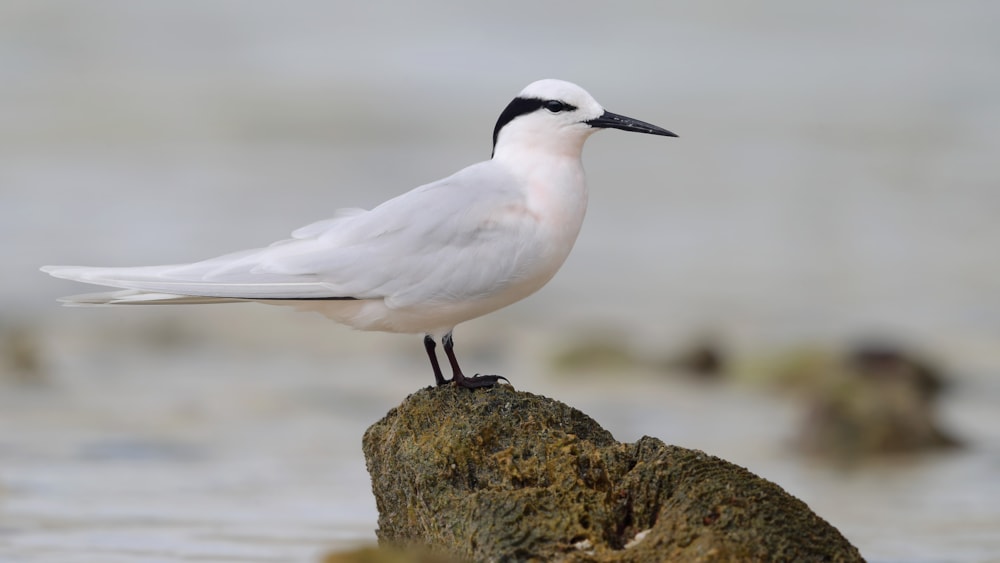
Black-naped Tern is a beautiful and common bird throughout the Seychelles (Kit Day).
The sky above Alphonse is full of frigatebirds and both Brown and Lesser Noddies, while a touch of extra class is supplied by a few pairs of White-tailed Tropicbirds. Alphonse is also home to an introduced population of Aldabra Giant Tortoises, which can often be seen crawling around on the grass by the tracks that criss-cross the island. The young tortoises require protection from the remarkably large resident population of Grey Herons, as well as a small number of feral cats, so they are housed in secure accommodation until they are too large to be threatened by predators.
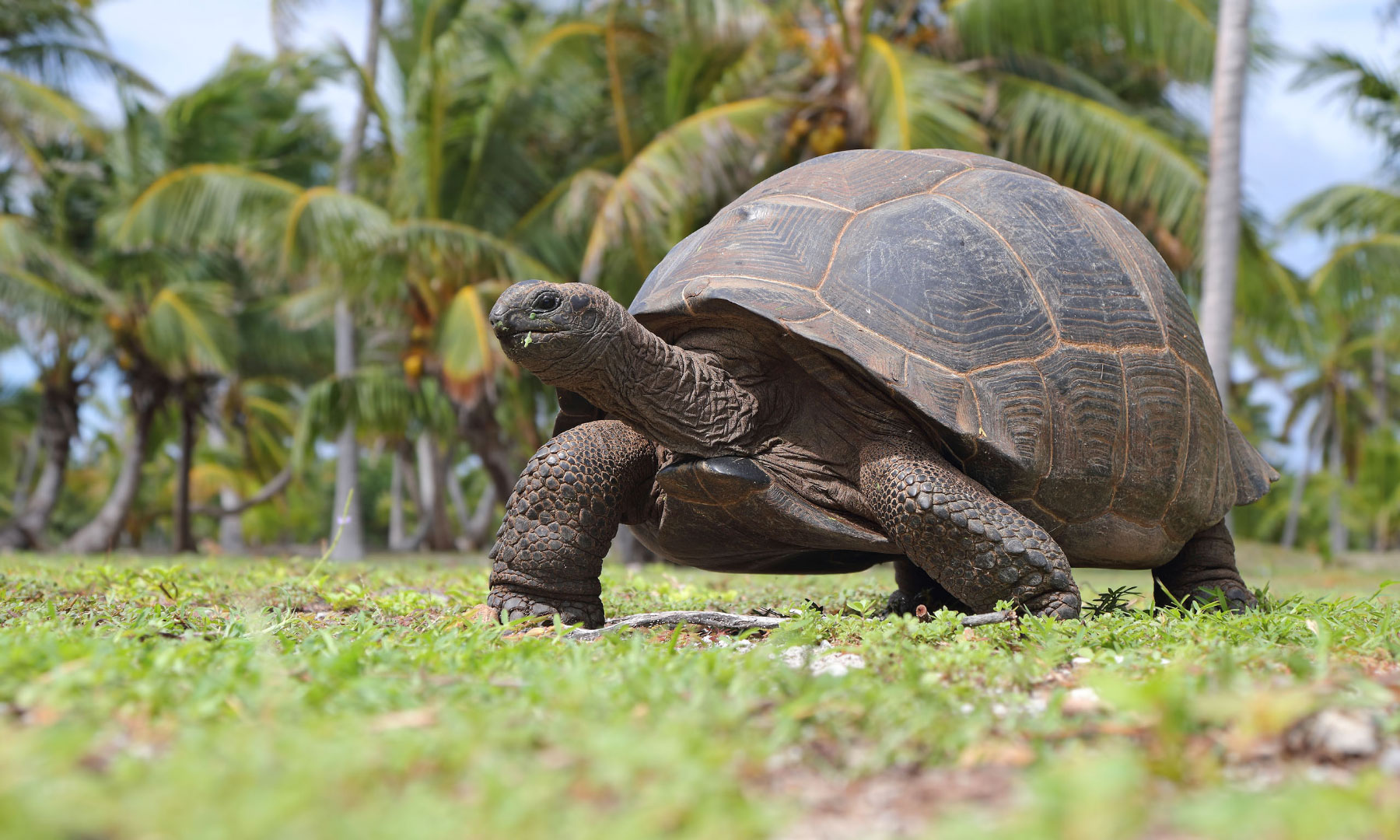
Alphonse hosts a population of introduced Aldabra Giant Tortoises, which make for a quirky sight when seen alongside familiar wintering waders, such as Ruddy Turnstone (Kit Day).
There are signs that the battle against the cats and non-native rats is being won, as a small colony of Wedge-tailed Shearwaters has recently been discovered on Alphonse. A nocturnal visit to experience the eerie calls of these birds was one of the highlights of my Seychelles trip. The ultimate goal of the Alphonse Foundation is to rid the island of these non-native pests, but the dense forest carpeting much of the island makes this a difficult and costly exercise.
Being an island, there's always the chance of something unusual turning up. Sightings on my visit included the first Grey-tailed Tattler and White-winged Tern for Alphonse, with a supporting cast of Yellow Wagtail (ninth record), Common Swift (seventh) and a brief glimpse of a cuckoo species (either the fifth Common or the third Lesser recorded on the island).
Other familiar species in this unfamiliar setting include Ruddy Turnstone, Whimbrel and Curlew Sandpiper, all feeding happily in the gardens and on the forest tracks. A turnstone eating away busily alongside a hulking Giant Tortoise is one of the more bizarre sights that can be frequently encountered on Alphonse!
Many visitors to the tropics come for the wildlife underneath the waves and the Outer Islands of the Seychelles excel in this department. Green and Hawksbill Turtles are easily seen paddling in the shallows off the numerous pristine white sandy beaches of Cosmoledo in particular, while on my visit to St François we also saw Lemon Shark and the confusingly named Spotted Eagle Ray. The coral reef ecosystems here appear to be in remarkably good health, and when combined with the abundant birdlife overhead and Giant Tortoises on the land, the title of the 'Galápagos of the Indian Ocean' seems entirely fitting!
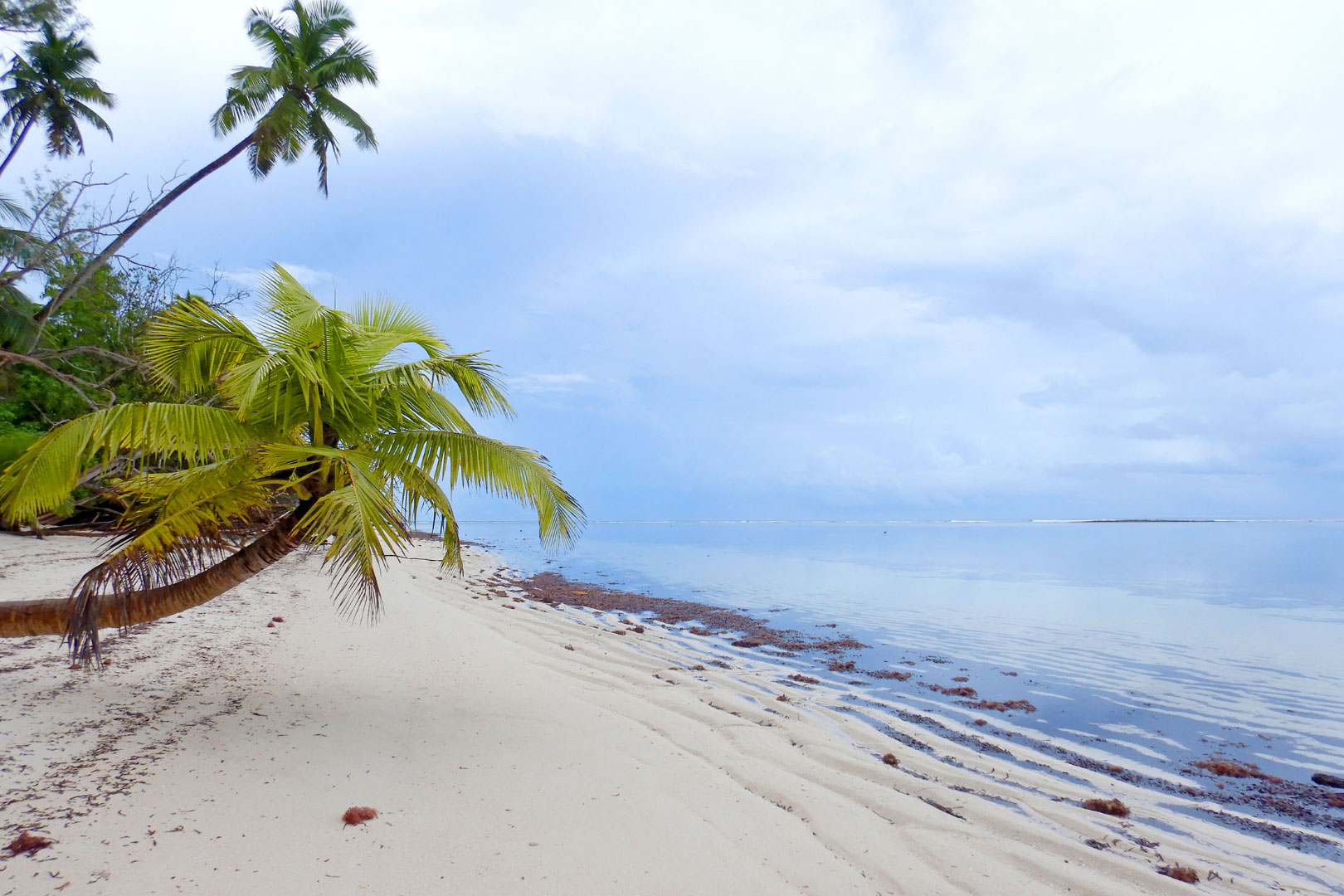
There is a real sereneness to Alphonse, and intensive conservation work is restoring the island's wildlife to its full glory (Kit Day).
Further information
Kit visited Cosmoledo and Alphonse in the Seychelles courtesy of Blue Safari: www.bluesafari.com/en
For more information regarding the Seychelles, please visit www.seychelles.travel or email seychelles@uksto.co.uk.

